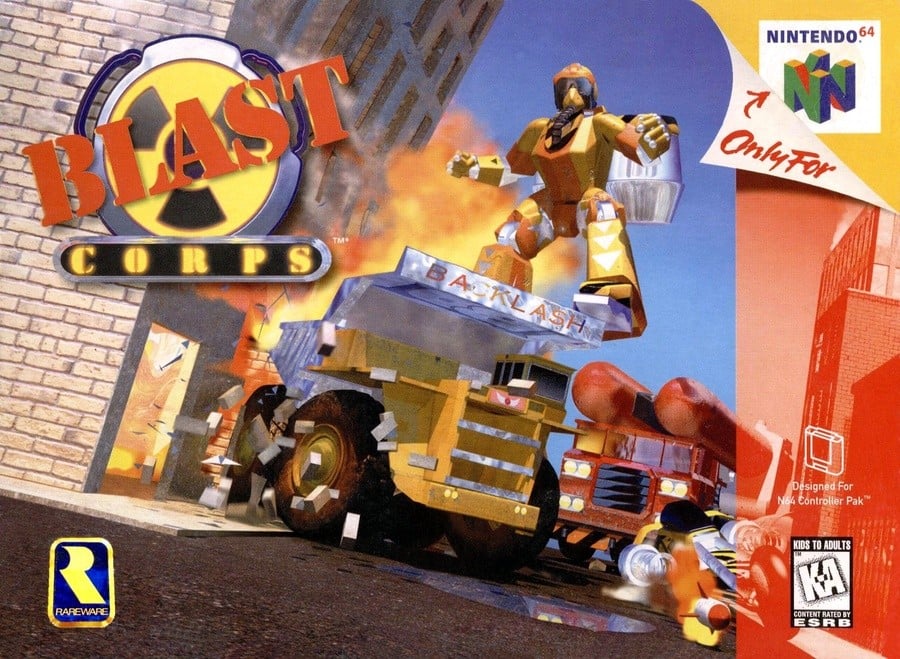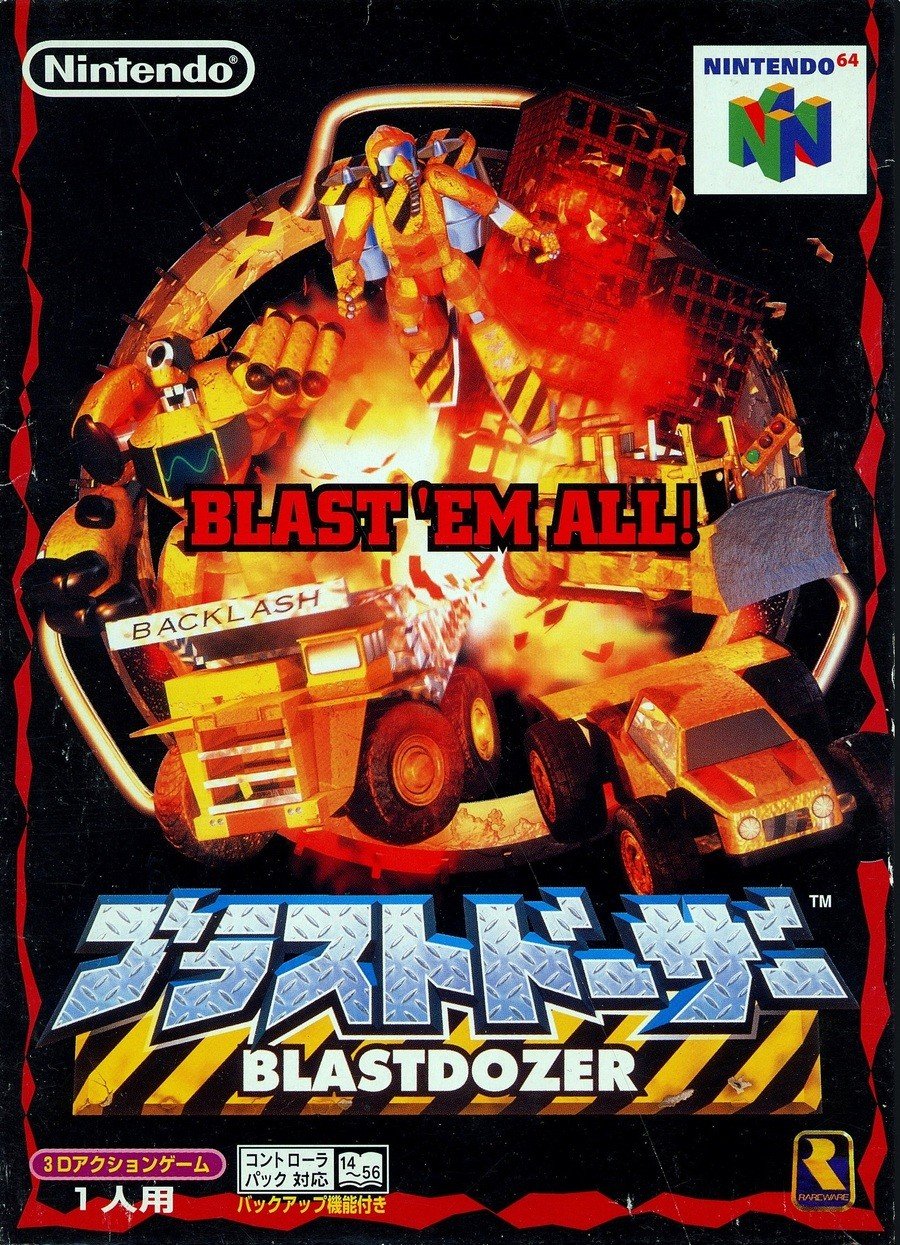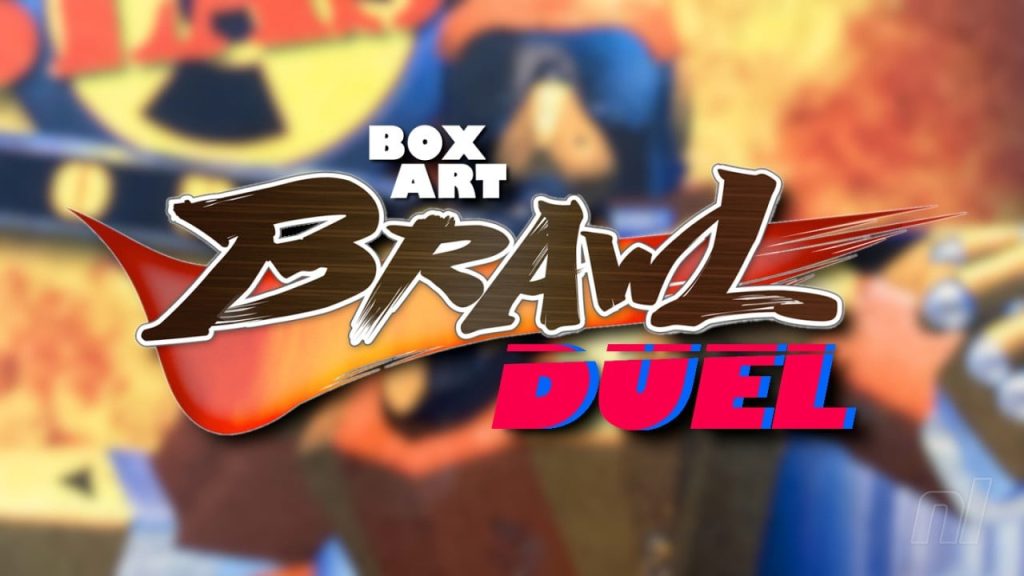Video game box art has long been a significant element of gaming culture, often serving as a first impression for potential players. This week, we dive into an exciting clash between regional adaptations of the iconic box art for Rare’s classic game, Blast Corps. Originally released for the Nintendo 64 in 1997, this action-puzzle game centers on players navigating various vehicles to destroy obstacles in the path of a runaway nuclear missile. As fans of this nostalgic title gear up for another installment of “Box Art Brawl,” they can’t help but reminisce about the unique artwork representing the game across different regions.
Box Art Showdown: North America vs. Japan
In the North American market, the Blast Corps box art showcases the protagonist, J-Bomb, in an action-packed pose atop his vehicle, Backlash, with the ominous bomb-laden carrier looming in the background. The contrasting colors and dynamic elements, such as flying debris and collapsing buildings, draw attention to the chaos of the game, reflecting its high-octane gameplay. However, some criticisms arise regarding the logo design, which some fans feel appears somewhat generic against the backdrop of the striking visuals.

On the other hand, the Japanese version of the game bears the title Blastdozer, and its box art embraces a different aesthetic altogether. Featuring formidable mechs and explosive visuals, it opts for a bolder design. With the tagline “BLAST ‘EM ALL!” displayed prominently, this cover radiates confidence and excitement. The juxtaposition of blue-steel plating against a vivid yellow and black warning pattern provides an eye-catching look that resonates well with the game’s theme of destruction. The unique title and artwork help avoid any potential mispronunciation issues that may arise from the English title “Blast Corps.”

Market Reaction: A Look at Box Art Preferences
This box art debate is not merely an aesthetic inquiry; it reflects broader trends in marketing and localization within the gaming industry. A recent poll showcasing player preferences for the two box art designs generated significant engagement, with voters expressing their opinions on which cover reigns supreme. The results showed a surprising inclination towards the Japanese box art, with 58.1% of the votes favoring the vibrant and bold design of Blastdozer over the North American cover, which garnered only 41.9% of the votes. This outcome highlights an increasing appreciation among gamers for unique artistic approaches that deviate from traditional Western styles.
Further statistical analysis from gaming market research firm Statista indicates that localized marketing efforts, including box art design, play a crucial role in game sales worldwide. Customizing art and branding for specific markets often leads to better reception and ultimately higher sales. As developers and publishers continue to adapt their strategies, the significance of box art in influencing consumer behavior remains a vital consideration.
Overall, the duel between North American and Japanese box art for Blast Corps serves as a reminder of the cultural nuances present in gaming. It is not merely about the game itself but also how it is presented to the audience. As the gaming community continues to evolve, these discussions offer insight into player preferences and the importance of aesthetic appeal in gaming culture.
With this brawl concluding, it is worth noting that Blast Corps is featured as part of the Nintendo Switch Online Expansion Pack library, allowing fans both new and old to revisit this classic title. Be sure to cast your vote in future installments to keep the discussion alive!

